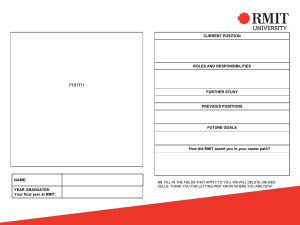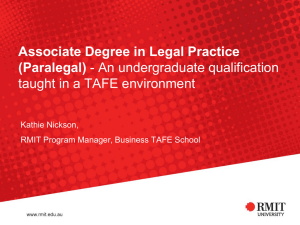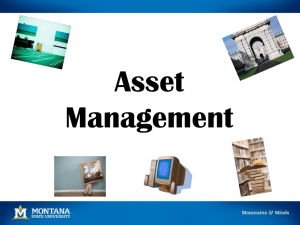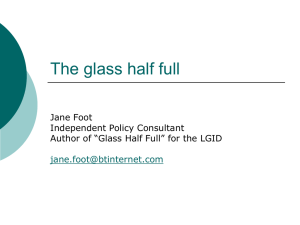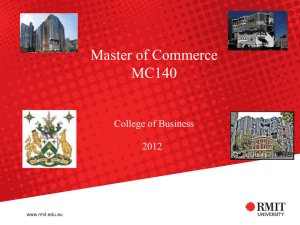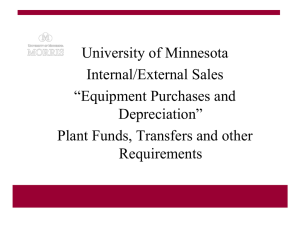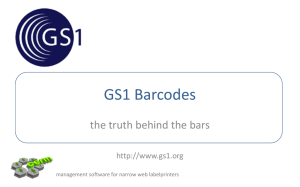Fixed Assets - RMIT University
advertisement
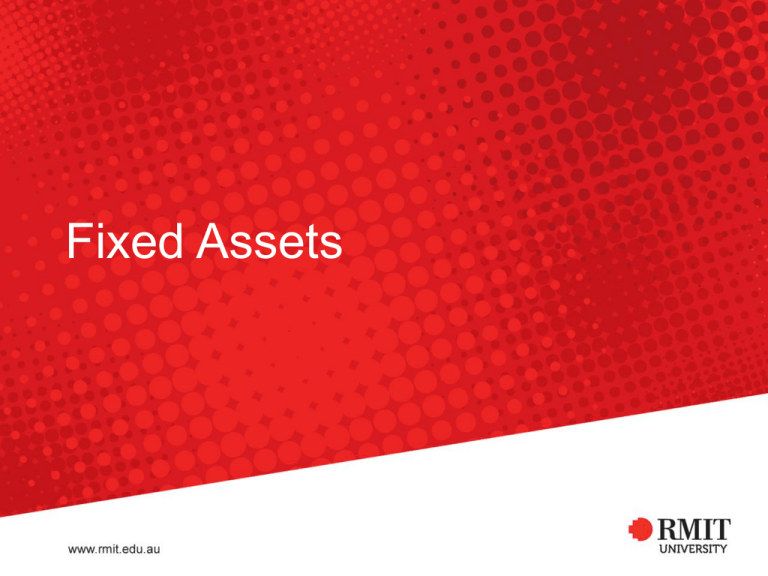
Fixed Assets Definition of Fixed Assets: • The University defines capital equipment as any single item valued at $2,000 (exclusive of GST) or greater based on the annual review of assets capitalisation value by RMIT Council. Categories of Fixed Assets include: • Motor vehicles • Land and buildings • Leasehold improvements • Equipments • Furniture and fittings • Artwork • RMIT’s library collection • Leased assets acquired under a finance lease or hire purchase RMIT University-Financial Services Group Policy Provisions • The University shall ensure that all purchases of fixed assets are properly authorised in accordance with budget allocations and the Financial Delegations Policy and Procedures. • The University shall ensure that all fixed assets are valued in accordance with Australian Accounting Standards and the Financial Management Act. Financial Services Group shall arrange for independent valuation of all land and buildings and Art Work at least every five years. • All fixed assets must be recorded in the Fixed Assets Register, which is maintained by FSG. All assets developed within a budget centre with a completed project cost of $2,000 or higher are subject of FSG’s approval prior to capitalisation. General view is that it will not be capitalised. RMIT University-Financial Services Group Policy Provisions Continues • Physical stocktakes of all fixed assets must be carried out at intervals not exceeding three years on a rotation basis covering total assets within three years. Any discrepancy discovered during physical stocktakes must be investigated and where necessary written off following due enquiry and authorisation. • Fixed assets must be kept with due regard for safety and security, and maintained in good working order. • Disposal of all surplus, unserviceable or obsolete fixed assets must be undertaken without undue delay. RMIT University-Financial Services Group Depreciation Method and Rates • RMIT adopts “straight-line” method of depreciation. Straight-line depreciation relates to assets depreciating at a fixed amount per annum, which is usually a percentage of the cost price or capitalised value of an asset over its useful life. • All depreciation expenses are currently budgeted centrally, except for “Low Value Assets” items less than $2K which is part of the school’s operating budget. RMIT University-Financial Services Group Low Value Assets • The “Low Value” assets are items less than $2,000 which are recorded in the Fixed Assets Register, but are fully depreciated in the month of purchase – Cost Element 584100 (Depreciation Equipment < $2K) and 584200 (Depreciation Furniture & Fittings < $2K). These items are not part of the capital budget. • There are two asset classes which identify “Low Value Assets” include: • Asset Class Cost Element Class Name • 61000 166100 Equipment < $2k • 62000 166200 Furniture & Fittings < $2k • All software purchases are treated as operating costs – Cost Element 584700 (Software) RMIT University-Financial Services Group Barcode: Fixed Assets • All fixed assets recorded on the Asset Register must have an RMIT barcode label affixed except for land and buildings, leasehold improvements, library collection and motor vehicles. Colleges and Portfolios are responsible to attach barcode labels on the assets. • Barcode labels for newly acquired fixed assets are printed by FSG (Alex Dieng) for distribution on a monthly basis to Colleges and Portfolios. • An email is sent to Finance Managers in the first week of each month advising barcode labels have been sent via internal mail. • Once the barcode labels affixed on the assets, a “Barcode Confirmation form” must be completed and signed. • Confirmed assets are recorded in SAP. RMIT University-Financial Services Group Barcode Label Sample RMIT University-Financial Services Group Fixed Asset Life Cycle Capital Budget Submission School raises purchase order request Authorised P.O request send to Purchasing for processing Purchasing raises purchase order and create assets pending good receipt Standard purchase order Split account assignment purchase order Assets are recorded in the Asset Register when good receipt Asset are recorded in the Asset Register when invoice receipt Capital expenditure appears in management report RMIT University-Financial Services Group Fixed Asset Life Cycle Continues Asset Barcode Disposal of Asset Barcode labels printed for newly acquired assets on a monthly basis Email send to Finance Managers advising barcode labels have been sent via internal mail Assets are disposed/written off as a result of the following: -Sale -Trade In -Surplus -Unserviceable -Obsolete -Lost/Stolen An asset disposal form must be completed and signed by authorised officer Schools are responsible to affix barcode labels on the assets An asset barcode confirmation form must be completed once labels have been affixed on the asset The authorised disposal form must be forwarded to FA Accountant for processing. Gains or losses on disposal are charged to the school. Barcode confirmation date will be updated in SAP for stocktake purposes RMIT University-Financial Services Group Frequently asked questions: • What information should be provided when raising a PO request for asset? – Description of the asset – Capital internal order(s) – Responsible cost centre – School internal order (for depreciation purposes) – Location – Custodian personnel – Asset class – If the equipment or item purchase for an existing asset (provided it is capital in nature), the existing asset number should be clearly quoted on the PO request. • Capital expenditure incorrectly coded to operating. What should I do? – In order to transfer from operating expense to capital, first an asset number must be created by providing the above information to FA Accountant (Alex Dieng). Prepare a fixed asset journal using the new asset number created and email to “Journals” for processing. RMIT University-Financial Services Group Frequently asked questions continues: • What should I do if I receive a direct invoice for an asset without a purchase order? – In order to process this invoice, first an asset number must be created by providing the above information to FA Accountant. Quote the new asset number on the invoice and send to Account Payable for processing. (please note all asset purchase must have a purchase order). • Replacement of assets are not automatic except for motor vehicles which are budgeted centrally (IO 100042). • Low value assets (<$2K) coded to capital will be transferred to the school operating budget. It is important that no low value assets are included in the annual capital budget submission. RMIT University-Financial Services Group Questions RMIT University-Financial Services Group

